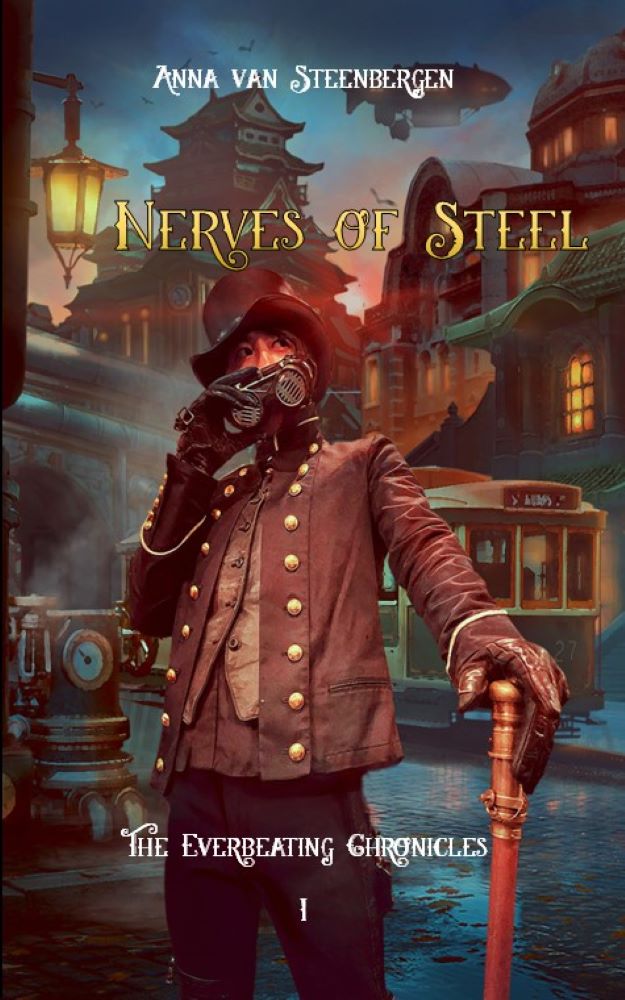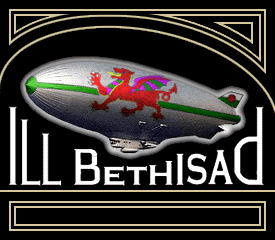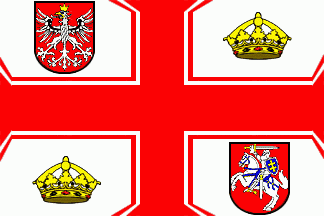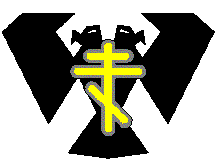Welcome to my pages!My name is Jan van Steenbergen, and this is my web corner. Since you have reached here, you are likely to take an interest in one or more of the things I am writing about. Either that, or you are interested in my person for whatever reason, or you are just surfing around and stumbled upon this page by sheer accident. In any case, most of these pages are somehow related to my work as a linguist and a language creator (or conlanger, if you prefer). Over the years, I have created hundreds of pages, and this thing called “Home Page” is supposed to be the “One page To Rule Them All, One Page To Find Them”. Enjoy your visit! |
Translation & InterpretingFirst and foremost, I am a certified translator and interpreter (Polish, Dutch) with more than 20 years of professional experience.  Translators and interpreters are the bridge between languages and cultures, an indispensible link between people who do not speak each other’s language. Although the two are often confused and both are essentially a matter of converting text from one language to another, translating and interpreting are different professions that require separate competences and qualifications. To put it simply, translating is done on writing, interpreting is done orally. Still, combining both professions has its advantages. Not only because sometimes situations arise where the same person should be able to act in both capacities, but also because the knowledge and experience built up in one role is a huge asset in the other. You can read here about the services I provide (in Dutch). |
Language creation (a.k.a. “conlanging”)
Language creation as an art as good as any. It requires knowledge, crafsmanship and artistry. To learn more about the art of language invention, try David Peterson’s Conlang Manifesto and Jesse Bangs’ Artlang Rant. And by all means visit the pages of our very own organisation: the Language Creation Society. Since are many different types of conlangs, and their number keeps growing exponentially, it has become necessary to group them into subcategories instead of lumping them together on one huge pile. For that reason, I have drafted a classification proposal in my article Classificatie van Kunsttalen (written in Dutch). One more thing: to see 70 differently conlangs in action, be sure to take a look at Conlang Translation Relay no. 10/R, which I had the pleasure of organizing in 2004. |
My languagesMyself, I am the proud father of a few conlangs as well, some of which are pretty well documented on the net. Let me point out that they have been developed for their own sake; it has never been my intention to promote their actual usage (well, with one exception actually). Here follows a list in more or less reverse chronological order: Boksirit or Elder Tongue (2021–2023) is a primordial language spoken on the Indian subcontinent, created for the upcoming Indian horror film Bokshi by Bhargav Saikia and Harsh Vaibhav. I was very happy to be hired for this assignment, not only because it is a great movie made by a highly talented young cineast, but also because the language plays a rather crucial role in the film, and because it allowed me to work with several wonderful Indian actors. Coming soon!
Wenedyk (2002) demonstrates what Polish would have looked like if it had been a
Romance language. It is an example of a so-called romlang, a Latin-based language that might have existed if history had been different.
Wenedyk is essentially the result of applying the changes that made Polish develop from Common Slavic, on Vulgar Latin. Vozgian (1996; redone in 2003) is a North Slavic language that underwent significant influence from its Uralic neigbours, especially the Komi language. Obviously, North Slavic languages do not really exist in our world, but the idea has inspired several conlangers, including myself. Hattic (1996) is a member of a fictional branch of the Indo-European language family, spoken in an unidentified republic somewhere in North Russia. I also created a sister language of Hattic, named Askaic; perhaps I will publish it here as well one day. Poilschi (2005) is not a conlang, but an alternative, typically Romance orthography for the Polish language (and, mutatis mutandis, applicable to Wenedyk as well). It is based on what Polish has in common, phonologically speaking, with the Romance languages. Yes, much of my conlanging efforts are in one way or another related to Polish. Just for fun, I also developed a Cyrillic orthography for the Polish language (2008). Brithenig is a language that is unfortunately not mine: it was created in 1996 by Andrew Smith from New Zealand. Brithenig does to Welsh what my own Wenedyk does to Polish, and I’ll frankly acknowledge that it was my main inspiration for creating Wenedyk. Because Andrew’s own site has been down for quite a while and probably will remain so for quite another while, it is my pleasure to host a mirror, so that this this beautiful language can still be admired. Volapük — another language that is not mine. It was created in 1879 by father Johann Martin Schleyer and rapidly became the first international auxiliary language to achieve considerable success. Although ultimately its role was taken over by Esperanto and nobody would still consider it a serious candidate for a world language nowadays, Volapük is still highly valued for its fascinating history, its rich literary heritage, its ingenious architecture and its quirky charm. To honour it, I have created a few pages that might be useful for learning and/or using Volapük. |
Ill Bethisad
My own responsibility within Ill Bethisad is Eastern Europe (under the link you will find links to individual countries and maps, mostly).
In the same series, you will also find a page about Ukraine. |
ContactIf you can think of a reason to get in touch with me, then don't hesitate to do so by dropping me an e-mail |
Fiction
Much as I am not a writer by any standard, I am fortunate enough to be married to one! My wonderful wife Anna van Steenbergen has been writing her entire life, always perfecting her writing skills, but only recently decided to have her first book published by HCS Publishing. Heartily recommended: Nerves of Steel, Book 1 of her Everbeating Chronicles. "There are sins only the gods can forgive, much like only fate can properly settle some scores." To get a taste, listen to The Everbeating Heart (part 1 of Nerves of Steel), narrated by Mateusz Łagut. Or follow her on Tiktok, Twitter, Instagram and/or Facebook. If you prefer to read The Everbeating Chronicles in Dutch, that is possible, too: Deel 1: De schuld van anderen and Deel 2: Lady Cat (both translated by yours truly and published by Steampunk Heaven). At last, here a page dedicated to her older work: Irl-Ania (in Polish). |
My publications about constructed languagesClassificatie van kunsttalen (2008). (in Dutch) The Slovio Myth. Fiat Lingua (ISSN 2156-566X), May 2016. (in English) Constructed Slavic languages in the 21th century. In: Grundlagenstudien aus Kybernetik und Geisteswissenschaft, Band 57, Heft 2 (June 2016). Akademia Libroservo, ISSN 0723-4899, pp. 102-113. (in English) Slava lingvokonstruado en la 21-a jarcento. In: Stanislav Košecký (ed.): Prilingve en Nitro: politike, historie, teorie, instrue. Fakaj prelegoj prezentitaj kadre de la 101-a Universala Kongreso de Esperanto. Rotterdam: UEA, ISBN 978-92-9017-130-0, pp. 105-115. (in Esperanto) Pravopisanje medžuslovjanskogo języka. Slovanská Unie, no. 2:1 (May 2017), ISSN 2464-756X, ISSN 2464-7578, pp. 24-32. (in Interslavic) Slovjanska kulturna diplomacija. SWOT analiza, strategija i taktika do budučnosti (with Vojtěch Merunka). Slovjani.info (July 2017), pp. 63-76. (in Interslavic) Zonal Constructed Language and Education Support of e-Democracy – The Interslavic Experience (with Maria Kocór, Lina Yordanova and Vojtěch Merunka). In: Sokratis K. Katsikas & Vasilios Zorkadis (eds.): E-Democracy – Privacy-Preserving, Secure, Intelligent E-Government Services. 7th International Conference, E-Democracy 2017, Athens, Greece, December 14-15, 2017, Proceedings (Communications in Computer and Information Science no. 792. Springer International Publishing, ISBN (print) 978-3-319-71116-4, (electronic) 978-3-319-71117-1), pp. 15-30. (in English) Umětne jezyky i ISO 639-3. In: Slovjani.info, no. 3/2018, pp. 52- 68. (in Interslavic) Język międzysłowiański jako lingua franca dla Europy Środkowej. In: Ilona Koutny, Ida Stria (eds.): Język / Komunikacja / Informacja nr XIII. Poznań: Wydawnictwo Rys, 2018. ISBN 978-83-65483-72-0, ISSN 1896- 9585, pp. 47–61. (in Polish) The Interslavic Language: An Opportunity for the Tourist Branch (with Vojtěch Merunka). In: Verda Canbey-Özgüler, Saye Nihan Çabuk, Aydın Zibel (eds.), International Symposium on Advancements in Tourism, Recreation and Sports Sciences. Montenegro, 5th-8th September 2018. Proceedings Book. Podgorica: GSI Publications, ISBN 978-605-81246-3-9, pp. 164–175. (in English) Čitateljnik: Antologija tekstov v medžuslovjanskom jezyku (with Vojtěch Merunka). Slovanská unie z.s., 2018, ISBN 8026314077, 9788026314073. (in Interslavic) Una nova era en la història de la invenció de llengües // A new era in the history of language invention. In: Alícia Fuentes Calle (coord.), Languages, Worlds and Action // Llengües, mons i acció. Linguapax Review 2018. Barcelona: Linguapax International, pp. 101-182. (in Catalan and English) Zonal Auxiliary Languages. In: Ilona Koutny, Ida Stria, Michael Farris (eds.), The Role of Languages in Intercultural Communication / Rolo de lingvoj en interkultura komunikado / Rola języków w komunikacji międzykulturowej. Cross- linguistic and Cross-cultural Studies 1. Poznań: Wydawnictwo Rys, pp. 41-48. (in English) |
Other workSome other translations I am responsible for:
Apart from my work as a translator and a language creator, I have also written a number musical compositions as well, mostly for chamber ensembles and choir. You can see a list of my works here. My father Hans van Steenbergen, who died in 1999 in a car crash, was quite prolific as a composer too. This space is reserved for a link to a page I will make in the future, dedicated to his work. My father also had a sister, Molly Mackenzie. This site is dedicated to her work as a painter, and it's an my pleasure to host it for her. |
MiscellaneousIn the past, I have written many articles for the Eastern Europe magazine Ablak, as well and for several other magazines and newspapers. A list of publications can be found on ORCID. My master’s thesis: De Oekraïners in Polen als factor in de Pools-Oekraïense betrekkingen (Universiteit van Amsterdam: Doctoraalscriptie Oost-Europese Studies. Scriptiebegeleider: Dr. A.W.M. Gerrits. Juli 2007). Because I enjoy sharing knowledge, I have also been fairly active on Wikipedia.nl, Quora.nl and Quora.en. And at last, I have written several movie reviews, which can be found on IMDb. |
My nameJan van Steenbergen (in full: Johannes Hendrik van Steenbergen) is my real name. I belong to the lucky ones who have a preposition in their name – that is, if you like prepositions, of course. Unlike in German, it is an integral part of my surname and has nothing to do with nobility at all. That’s why I don’t like it when people address me as "Mr. Steenbergen", because that's not who I am. Also note that the preposition "van" is not capitalised when preceded by my first name. Steenbergen is a town in Noord-Brabant, and the name "Van Steenbergen" suggests that one of my ancestors must have hailed from that place. Although the town is large enough for my average countryman to have at least heard of it, I have encountered many misspellings of my surname, both in the Netherlands and abroad. Mostly things like Steenberg, Steenberging, Steenberger, Steernbergen, Steenbrugge, Stenburgen... I’ve even seen it turned it into Van September! However, not every alternative spelling of my name is necessarily a mistake. For example, it is Jans van Steenbergens in Latvian and Janas van Steenbergenas in Lithuanian, because that's what those languages do. And then we have the various transliterations into Cyrillic and other scripts. My first name is rarely a problem, but I have seen various Russian transcriptions of my surname: usually Стенберген, but I have also encountered Стенберхен, Стеенберген, Стейнберген, Штеенберген, Штейнберген and even Стинберген (the latter three are definitely wrong, as my name is neither German nor English: the correct pronunciation is [jɑn fɑn 'ste:nbɛrχǝn] in IPA). Among other transcriptions of my name are Ян ван Стээнбэрген (Mongolian), ヤン・ファン・ステーンベルヘン (Japanese), יאן ואן סטינברגן (Hebrew), იან ვან სტენბერგენი (Georgian), यान वान स्तय्न्बेर्गन (Hindi), يان ۋان ستېنبېرگەن (Uyghur) and ያን ቫን ስቴንበርገን (Amharic). Although the surname Van Steenbergen is neither particularly common nor particularly rare, my brother Frederik, my three children and I are the only surviving Van Steenbergens of our family, at least as far as I can trace back, which is about five generations. Any bloodties to other people carrying the same name are not impossible, but they are very thin at best. I have never made a secret of my true identity on the Internet, but for login names, e-mail addresses and the like I usually refer to myself as IJzeren Jan, which translates as "Iron Jan". During my years as a student, instead of studying I used to play a lot of computer games (simple ones of course, because it's the late 1980s and the early 1990s we're talking about here), and whenever I made it into the highscores, I wrote either "IJzeren Jan" or "Kriegsherr Jan". And that's more or less how I became IJzeren Jan, even though I am a rather mild and quiet person in reality. Oddly, it took years before I found out that "IJzeren Jan" was also the nickname of Jan Pzn. Coen, a colonialist hardliner from the 17th century, who also happens to be a symbol of my native town Hoorn, a.k.a. "de Coenstad". |
|
| You can make a donation to this site by clicking the following button: | Click here to find out why... |
Conlanger Code v1.1: CG|v.1.1|lh+|cN:L:C:H|a++|y|n5:4d|!B|A+|E-|L*|N5|Ic/d/m/v|k--|ia:+|p-|s-|m--|o++|P---|S+|Interslavic
 Constructed languages are languages have
not evolved naturally in an environment of native speakers, but were created for a particular purpose. Some well-known examples are
Esperanto, Tolkien’s languages and the Klingon language from Star Trek, but except for those, most people are rather unfamiliar with the
phenomenon. Nevertheless, hundreds of constructed languages have been discovered or rediscovered after the Internet made its appearance, and
thousands of new ones have been created afterwards.
Constructed languages are languages have
not evolved naturally in an environment of native speakers, but were created for a particular purpose. Some well-known examples are
Esperanto, Tolkien’s languages and the Klingon language from Star Trek, but except for those, most people are rather unfamiliar with the
phenomenon. Nevertheless, hundreds of constructed languages have been discovered or rediscovered after the Internet made its appearance, and
thousands of new ones have been created afterwards.
 A constructed universe which I share the honour of participating in.
In fact, it is not a constructed universe, but our own universe with an alternate history. Originally designed by Andrew Smith as a universe in
which Wales and surroundings speak a Romance language,
A constructed universe which I share the honour of participating in.
In fact, it is not a constructed universe, but our own universe with an alternate history. Originally designed by Andrew Smith as a universe in
which Wales and surroundings speak a Romance language,  Of course, not all Eastern Europe is
“mine”. My primary playing ground is the
Of course, not all Eastern Europe is
“mine”. My primary playing ground is the  Less elaborated but still mostly my work is
Ill Bethisad's
Less elaborated but still mostly my work is
Ill Bethisad's